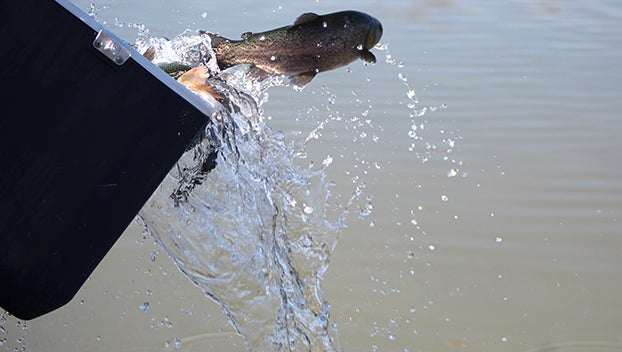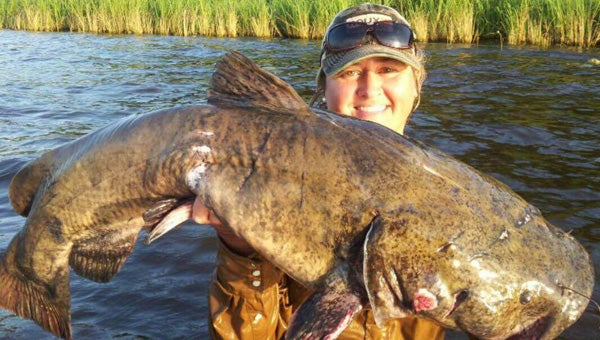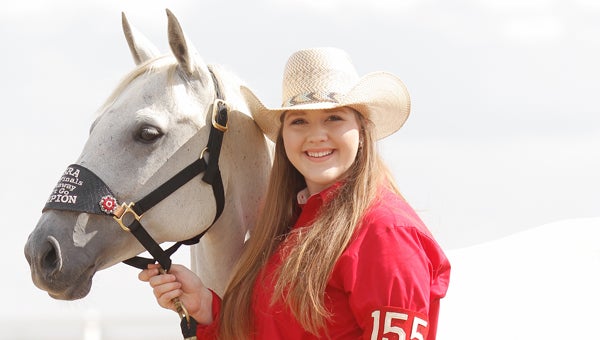Pre-spawn coming to Miss-Lou
Published 12:01 am Sunday, January 6, 2013
Low water levels on the Louisiana oxbow lakes are no longer a problem. The rains came just in time.
This month the largemouth bass and white perch will enter the pre-spawn phase. The female fish are now developing eggs and when weather conditions are good, they are feeding.
If the rains keep up and the weirs are left alone to do their job, we will have a good spawn this year. Even though these lakes are only a few miles apart, the fish behave very different.
Of the three most popular lakes — Bruin, St. John and Lake Concordia — Lake Concordia’s bass are the first to spawn. That could happen as early as mid-February.
It just depends on water temperature.
Right now the surface water temperature on Lake Concordia is pretty much 52 to 53 degrees all over the lake. Toward the end of the month, we could see temperatures in the upper 40s, but that would be rare.
What we watch for in mid-February is a few days of sunshine and a slight rise in water temperature. When Lake Concordia hits 56 to 57 degrees, the first wave of female bass will make the move to the spawning flats. They may not actually start to spawn, but they will be in or close by the spawning areas.
The males are the first to move up. Male bass will search for a suitable site, preferably clear water with a hard bottom that receives a lot of sunshine with some thick cover close by. The female bass will then began to search for the nests. As Mother Nature intended, the larger females will take the best spawning beds. The smaller male bass work hard fanning out a one to two foot diameter area and keep it clean with hopes of drawing a female to his nest.
It is a very competitive time for the largemouth bass.
Back when we had moss in Lake Concordia, which made water clarity so much better, I would not fish but watch as three to four male bass would work hard building a nest. I found it more interesting to watch these fish at work than catching them.
During the spawn, it is just as important to practice catch and release of the smaller bass as it is the big egg-laden female bass. The female will lay some of her eggs and move on. The male will remain with the nest guarding it until the eggs hatch and the fry turn to fingerlings and swim away.
If you catch a male bass off a nest and keep it, the bream, turtles and other predators will move in and eat the eggs or fry. I am sort of jumping the gun and the reason is we all get excited about the bass and white perch spawn.
This is January and for now we only have a couple of patterns that will produce. Again, this all depends on what lake you are fishing.
If you are on a place like Okhissa Lake in Franklin County, it is a completely different game. Okhissa is an 1,100 acre man-made reservoir with creek channels, drop offs, lots of deep water and points. We don’t have that type of structure on the more or less dish pan bottom Louisiana oxbow lakes.
Right now the big female bass in the reservoirs are holding in 15 to 30 feet of water on main lake humps and ridges.
You can catch these bass and probably have your best day ever in January, by fishing heavy jigs and big jigging spoons.
A good sonar unit is a must when fishing offshore structures on any lake or reservoir. On the oxbow lakes we are very much limited to the deeper outside cypress trees, piers and man-made brush piles.
You might catch a bass in two feet of water and five casts later catch one in 25 feet of water.
All in all, 2013 is kicking off as a very positive year in the fishing world. Stay tuned. We have lots of bass tournaments coming up and some good fishing reports coming soon.
Eddie Roberts writes a weekly fishing column for The Democrat. He can be reached at fishingwitheddie@bellsouth.net.




